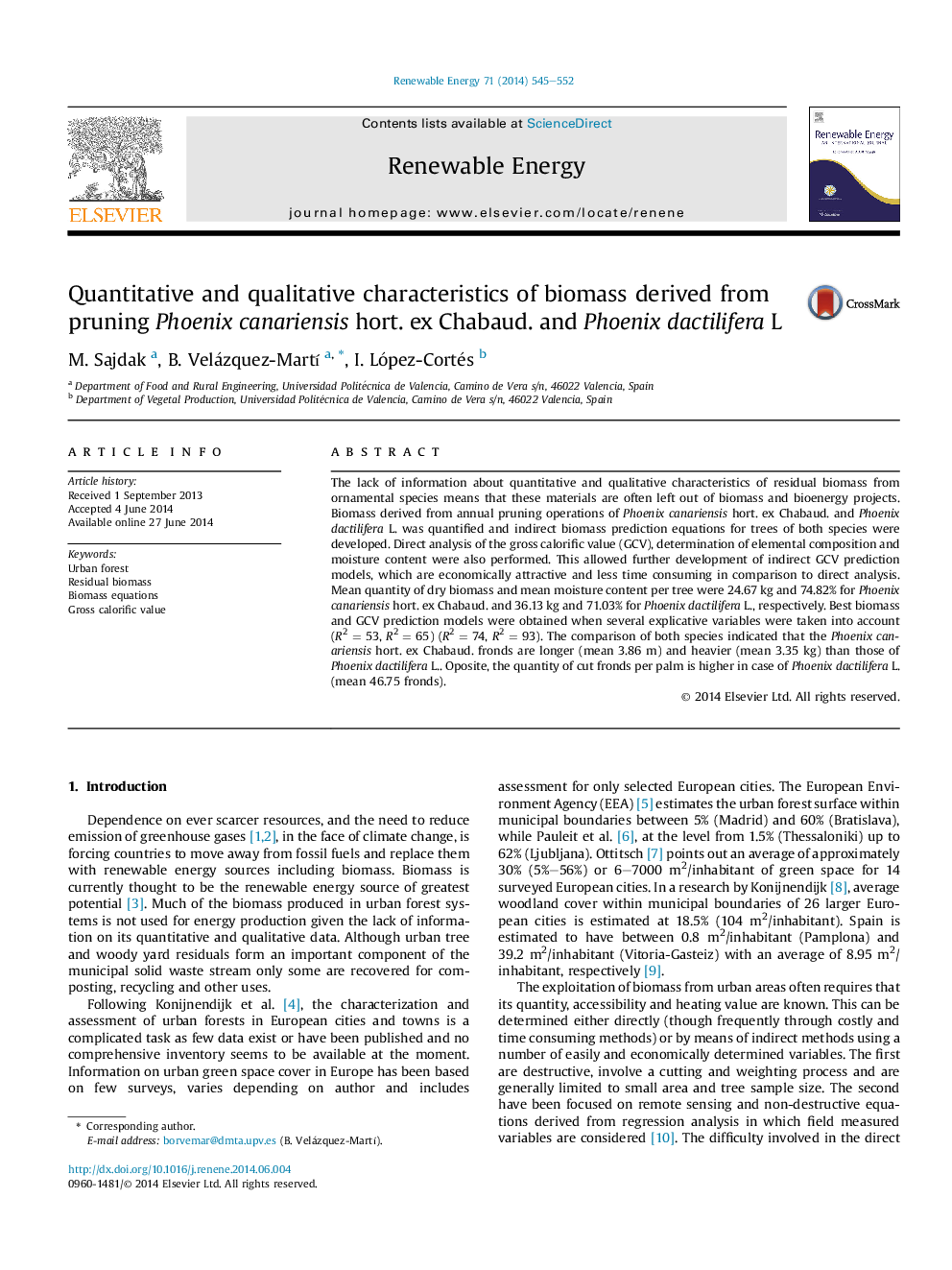| Article ID | Journal | Published Year | Pages | File Type |
|---|---|---|---|---|
| 6768320 | Renewable Energy | 2014 | 8 Pages |
Abstract
The lack of information about quantitative and qualitative characteristics of residual biomass from ornamental species means that these materials are often left out of biomass and bioenergy projects. Biomass derived from annual pruning operations of Phoenix canariensis hort. ex Chabaud. and Phoenix dactilifera L. was quantified and indirect biomass prediction equations for trees of both species were developed. Direct analysis of the gross calorific value (GCV), determination of elemental composition and moisture content were also performed. This allowed further development of indirect GCV prediction models, which are economically attractive and less time consuming in comparison to direct analysis. Mean quantity of dry biomass and mean moisture content per tree were 24.67Â kg and 74.82% for Phoenix canariensis hort. ex Chabaud. and 36.13Â kg and 71.03% for Phoenix dactilifera L., respectively. Best biomass and GCV prediction models were obtained when several explicative variables were taken into account (R2Â =Â 53, R2Â =Â 65) (R2Â =Â 74, R2Â =Â 93). The comparison of both species indicated that the Phoenix canariensis hort. ex Chabaud. fronds are longer (mean 3.86Â m) and heavier (mean 3.35Â kg) than those of Phoenix dactilifera L.. Oposite, the quantity of cut fronds per palm is higher in case of Phoenix dactilifera L. (mean 46.75 fronds).
Related Topics
Physical Sciences and Engineering
Energy
Renewable Energy, Sustainability and the Environment
Authors
M. Sajdak, B. Velázquez-MartÃ, I. López-Cortés,
